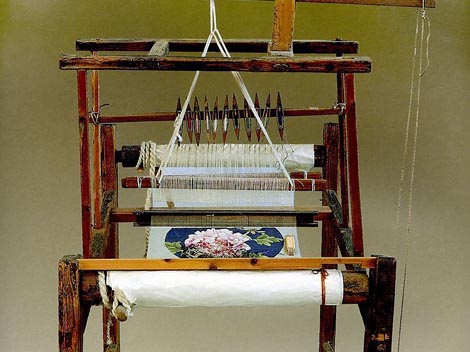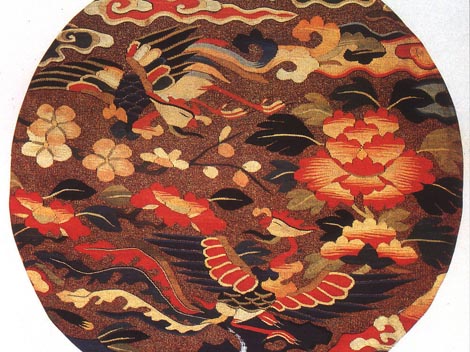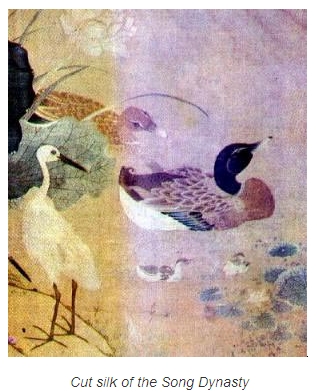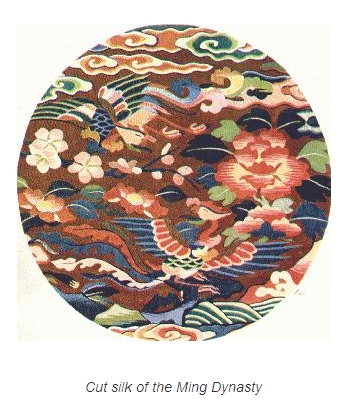

Kesi,or Cut Silk,refers to silk tapestry with cut designs, and is a unique Chinese traditional silk weaving technique. Archaeological evidence indicates that silk tapestries with cut designs were produced in China at least as early as the Tang Dynasty (618-907). In the Song Dynasty (960-1279), tapestries became popular for their classical coloring, refined workmanship, and realistic designs, making it the golden age of this art form in China. In fact, the National Palace Museum is renowned for its impressive collection of Song Dynasty tapestries. Tapestries of the following the Yuan Dynasty (1279-1368) sometimes also included threads of gold for a unique and opulent effect. Unfortunately, few such examples survive today. It was during the Ming Dynasty (1368-1644) that the art of tapestry witnessed a revival. Many tapestries made in the early Ming Dynasty were imitations of works in the Song Dynasty, but artisans were later able to create works with vibrant compositions and increasingly refined weaving. Some tapestry designs were even embellished with brushwork and colors for an even more beautiful manner. Tapestries of the Qing Dynasty (1644-1911) followed with increasing precision and evenness in terms of weaving techniques. The range of subject matter also blossomed as designs became ever more abundant and complex. The practice of combining tapestry and painting spread, resulting in further variety and beauty for this art form.

Tapestry is an art of weaving accomplished on a basic flat loom. With a combination of partial weft (vertical) threads attached to full warp (horizontal) threads, it differs from other woven silk goods that have full warp and weft threads. In other words, the warp threads are first set in place and then threads of various colors and lengths are shuttled and attached for the weft to create the desired design or pattern. When seen up close, the colored threads that make up the images are all independent. Therefore, it is particularly difficult to make patterns with curves using only vertical weft threads. Furthermore, since the edges of forms and patterns often appear abrupt and have a saw-tooth gap where they are attached to the warp, they look as if they are cut out. For this reason, fine silk tapestry is also referred to as "cut silk" in Chinese. Subject matters in cut silk include human figures, mountain and water scenery, flowers and birds, etc.

Silk tapestry with cut designs is one of the most artistic forms of traditional Chinese handicraft. Though many of the artisans who made them are anonymous, their works reveal an exceptional level of skill and patience as well as a considerable degree of artistic cultivation. The National Palace Museum is home to a large collection of tapestries from the ages, and this special exhibition represents a selection of some of the finest works to provide viewers with an opportunity to further appreciate and understand this important art form in traditional China.





